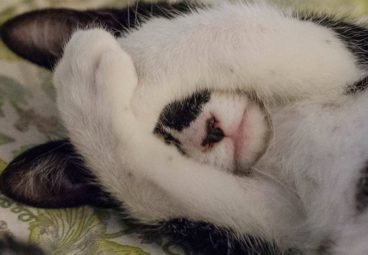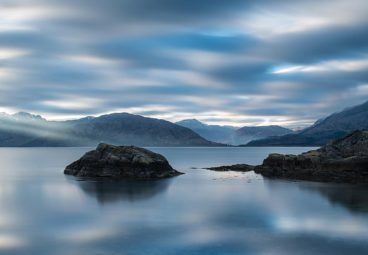San Mateo (
SAN mə-TAY-oh; Spanish for ‘”Saint Matthew”‘) is a city in San Mateo County, California, about 20 miles (32 km) south of San Francisco and 31 miles (50 km) northwest of San Jose. San Mateo had an estimated 2019 population of 104,430. It has a Mediterranean climate, and is known for its rich history. The biggest economic contributors to the city include the Medical Center, one of the local school districts, and Sony’s Sony Interactive Entertainment division. Finally, being in the center of the San Francisco Bay Area, it has many ways to travel between the major cities of that area.
History
The Ramaytush people lived in the land, prior to it becoming the city of San Mateo. In 1789, the Spanish missionaries had named a Native American village along Laurel Creek as Los Laureles or the Laurels (Mission Dolores, 1789). At the time of Mexican Independence, 30 native Californians were at San Mateo, most likely from the Salson tribelet.
Naming of the city
Captain Frederick William Beechey in 1827 traveling with the hills on their right, known in that part as the Sierra del Sur, began to approach the road, which passing over a small eminence, opened out upon “a wide country of meadow land, with clusters of fine oak free from underwood… It strongly resembled a nobleman’s park: herds of cattle and horses were grazing upon the rich pasture, and numerous fallow‑deer, startled at the approach of strangers, bounded off to seek protection among the hills… This spot is named San Matheo, and belongs to the mission of San Francisco.”
Starting in 1856, the city of San Mateo was documented by Spanish colonists as part of the Rancho de las Pulgas (literally “Ranch of the Fleas”) and the Rancho San Mateo, the earliest history is held in the archives of Mission Dolores.
19th century
Around the 1850s, some San Franciscans began building summer homes in the mid-Peninsula, because of the milder climate. While most of this early settlement occurred in adjacent Hillsborough and Burlingame, a number of historically important mansions and buildings were constructed in San Mateo.[citation needed]
A.P. Giannini, founder of the Bank of Italy (which later became the Bank of America), lived here most of his life. His mansion, Seven Oaks, is listed in the National Register of Historic Places (No. 99001181). Located at 20 El Cerrito Avenue, it has been deteriorating as it has not been preserved or occupied for years.
In 1858, Sun Water Station, a stage station of the Butterfield Overland Mail route, was established in San Mateo. It was located 9 miles (14 km) south of Clarks Station in what is now San Bruno and 9 miles north of the next station at Redwood City.
The Howard Estate was built in 1859 on the hill accessed by Crystal Springs Road. The Parrott Estate was erected in 1860 in the same area, giving rise to two conflicting names for the hill, Howard Hill and Parrot Hill. After use of the automobile changed traffic patterns, neither historic name was commonly applied to that hill. The Borel Estate was developed near Borel Creek in 1874. It has been redeveloped since the late 20th century for use as modern offices and shops. The property is managed and owned by Borel Place Associates and the Borel Estate Company.[citation needed]
Hayward Park, the 1880 American Queen Anne-style residence of Alvinza Hayward (often said to be “California’s first millionaire” from his silver and banking fortunes), was built on an 800-acre (3.2 km2) estate in San Mateo which included a deer park and racetrack, roughly bounded by present-day El Camino Real (on the west), 9th Avenue (on the north), B Street (on the east) and 16th Avenue (on the south). A smaller portion of the property and the mansion, was converted into The Peninsula Hotel in 1908, following Hayward’s death in 1904. The hotel burned down in a spectacular fire on 25 June 1920.
20th century
In 1893, Pedro Evencio had been called the last of the Ramaytush Native American of San Mateo. However his descendant, Joseph (José) Evencio (the younger) lived at Coyote Point until World War II; his final whereabouts are unknown.
In the early 20th century, Japanese immigrants came to San Mateo to work in the salt ponds and flower industry. Although Japanese-Americans only account for 2.2% of the population today, they continue to be a major cultural influence and a draw for the rest of the region. The Eugene J. De Sabla Japanese Teahouse and Garden was established in 1894 at 70 De Sabla Road, designed by Makoto Hagiwara, designer of the Japanese garden in Golden Gate Park in San Francisco. He arranged for Japanese artisans to be brought to the United States primarily for its teahouse construction. The parcel was purchased in 1988 by San Francisco businessman Achille Paladini and wife Joan, who have restored it. The garden features hundreds of varieties of plants and several rare trees. A large koi pond surrounds an island. The property was placed on the National Register of Historic Places in 1992.
In December 1967, Sgt. Joe Artavia, then serving in Vietnam with Alpha Company, 1st Battalion, 327th Infantry Regiment of the 101st Airborne Division wrote to his sister, Linda Giese, who was a resident of San Carlos working in San Mateo, asking if San Mateo or San Francisco could adopt the company, saying that it would bring “the morale of the guys up as high as the clouds”. San Mateo passed a resolution on March 4, 1968, officially adopting Alpha Company and letters and gifts began arriving from the citizens of San Mateo. Joe would be killed in action on March 24, 1968, less than three weeks after the resolution. Linda would travel to Vietnam to meet with the men of Alpha Company for Christmas in 1968 and deliver personalized medallions from the City of San Mateo. In 1972, San Mateo requested and received permission to have Alpha Company visit the city when they left Vietnam, later holding a parade in January 1972, believed to be the only parade honoring the military during the Vietnam War. In 1988, Joseph Brazan wrote a screenplay entitled A Dove Among Eagles chronicling the adoption of Alpha Company by San Mateo and the real-life romance between Linda and Artavia’s commander, Lt. Stephen Patterson. The city expanded its support to the entire 1st Battalion in 1991, when they were deployed to Kuwait under Operation Desert Storm.
Bay Meadows horse-racing track was torn down in 2008.





